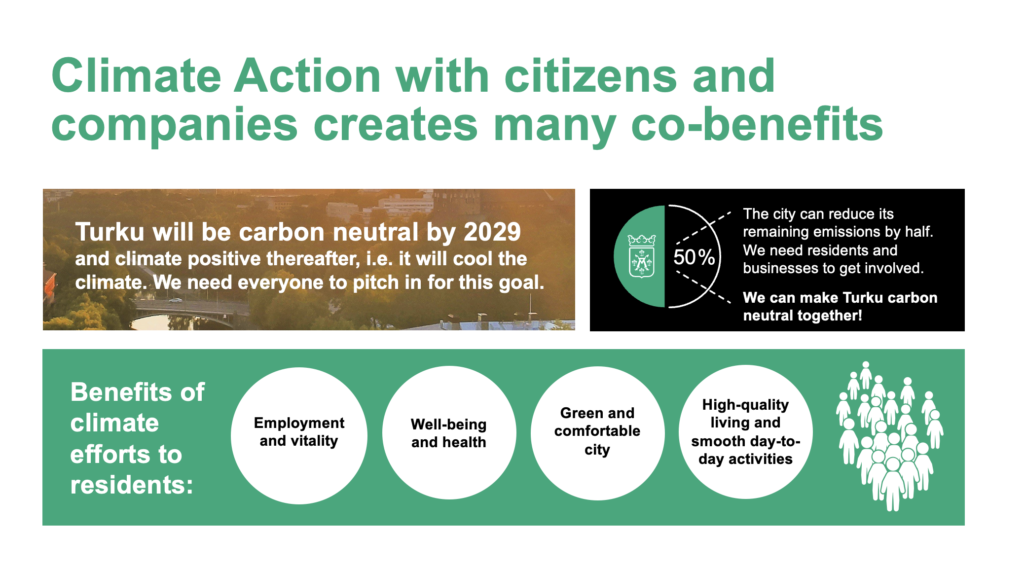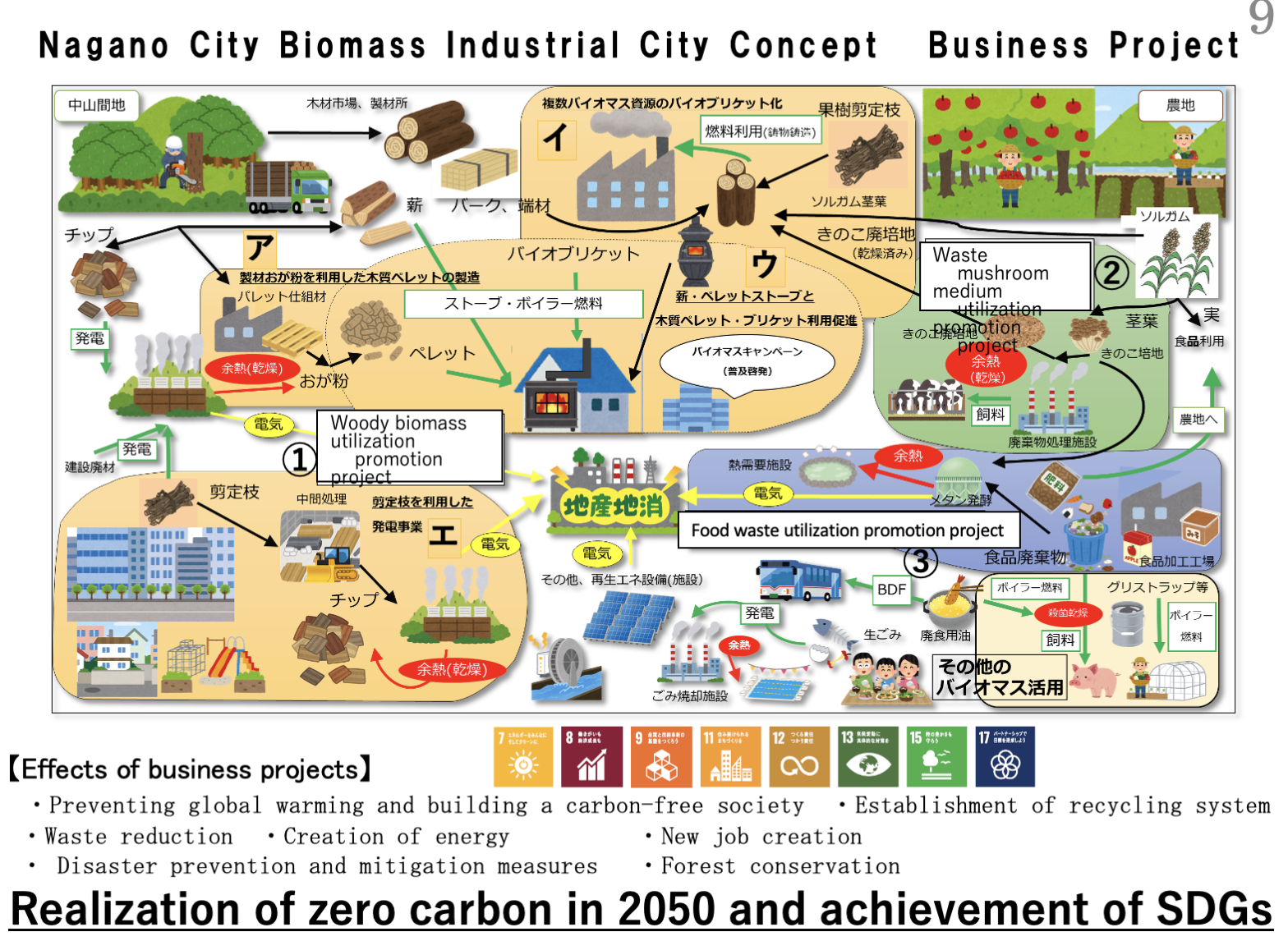The cities of Nagano in Japan and Turku in Finland held a webinar to compare climate policies and to discuss possible areas for cooperation. Both cities are in the process of reviewing and updating their climate plans.
Kazuhiro Yoshihara, Senior Staff, Environmental Protection and Climate Change Policy Section, presented the Zero Carbon 2050 Strategy of Nagano City. Nagano experienced in real life the impact of extreme weather when they were hit by a big typhoon in October 2019. Large areas were flooded and damage to the city and farming areas was extensive. With this experience in fresh memory, Nagano joined other international and national actors in declaring a climate emergency. The city also made a commitment to zero carbon in 2050. Nagano’s climate policy is now an integrated part of the environmental plan. Environmental policies will also be integrated into the overall development plan of the city.
The new climate plan covering the period 2022 -2026 has six policy areas.
- Renewable energy and local production and local consumption of energy
- Effective use of biomass resources
- Energy saving and efficiency
- Decarbonization throughout community development
- Carbon sinks through absorption in forests
- Adaptation to climate change
Nagano is surrounded by forests and the city can count them as carbon sinks. The strategy to achieve zero emission by 2050 is to push down emissions so much that the remaining emissions can be absorbed by those forests.
According to the Nagano Environmental Conservation Research Institute, the temperature at the end of the 21st century will be at least 1.9 ℃ higher than now even if effective measures to reduce emissions are implemented. Nagano has therefore included adaptation measures in the climate plan.
Saori Matsuda, Group Leader, Environmental Protection and Climate Change Policy Section, explained one example of climate measures Nagano has adopted: the Nagano Biomass Industry City Concept. The vision of this plan is to reduce climate gas emissions through effective use of local biomass resources.
Nagano has identified biomass for energy use as an area for new types of businesses and local economic development. Biomass from the thinning of forests and wood waste in the forestry industry are used for electricity generation. Waste biological material from the cultivation of mushrooms is used as solid fuel and raw material for biogas. Waste from juice and miso production can also be used and circulated in the local society.

Risto Veivo, Climate Director, City of Turku, explained that Turku has a goal to become a carbon neutral area by 2029 when the city of Turku will be 800 years old. Beyond 2029 the plan is to move on and become a climate positive area contributing with solutions to fulfill the needs of the world. Turku finds it important to work in close cooperation with many different partners in Finland and internationally. They like to use models that are used by many others, for example, by the Covenant of Mayors and ICLEI.
Since 1990 Turku has already been able to reduce greenhouse gas emissions from the Turku area by 51%, but the energy and traffic sectors need extra attention and more efficient measures to reduce emissions.
The City of Turku Climate Plan with target year 2029 is implementing the Paris Agreement towards a 1.5 ℃ degree warming. This means promoting city management and citizen lifestyles that will limit global warming to 1.5 ℃. Turku holds elections every fourth year and the elected representatives form a new city council. Every new city council gets the chance to review the climate plan and the goals and make improvements.
Turku also has a roadmap for a circular economy and just like in Nagano, local resources play an important role in climate policies. Turku is using wood-based fuel in a large-scale district heating facility and is producing both heat and biogas for electricity in a large sewage plant located underground in central Turku. Wind and sun are other local resources being harnessed for energy. The share of renewable energy in Turku was almost 80% in 2020.
In discussion, Turku and Nagano found many areas of common interest suitable for cooperation projects within the IURC framework.
To reduce traffic emissions, both Finland and Japan are expecting a shift to electric cars. Japan has a goal that all newly sold cars will be electric by 2035, including plug-in hybrid cars. Nagano is thinking about how they can encourage people to switch to electric cars and thus contribute to the goal. As for larger vehicles, Finland is expecting more biofuel while the choice in Japan might be hydrogen.
Turku is trying to increase carbon sinks in local forests by encouraging landowners to also do so, making it a part of their climate plan since 2020. One example is the energy company in Turku that planted trees in an area where the new forest will combine with a habitat for flying squirrels. When compensating emissions locally with forests, there are several other benefits. It creates biodiversity and recreation space for citizens, and helps with climate adaptation. The value as a carbon sink also can be counted although it cannot be turned into cash.
Forests are important for carbon offset in both Europe and Japan, but it takes time for trees to grow. Turku is therefore also looking into the use of biochar, a method that takes less time. One ton of carbon is much cheaper in Japan than in Finland, but Nagano expects an expanding debate in Japan.
